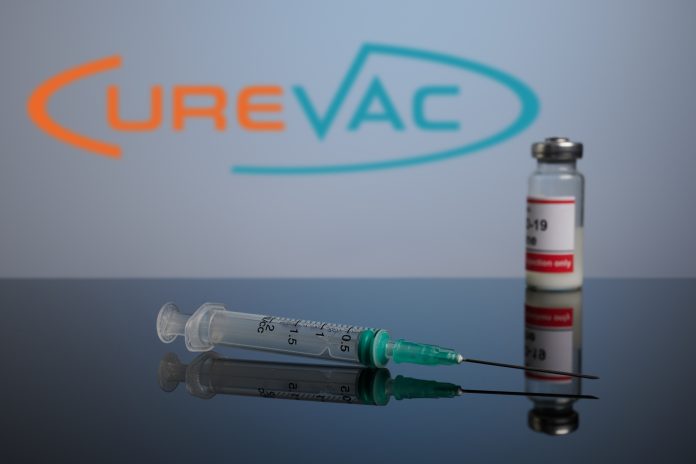The German-made CureVac vaccine has given a result of 47% efficacy, much lower than expected – now, the proposed delivery of 225 million doses to the EU is at risk
The CureVac vaccine, also known as CVnCoV, has a current efficacy of 47%. This is below the threshold of 70% described by Dr Anthony Fauci as necessary for stopping COVID-19, and would not be able to suppress the virus if given to a whole population.
These findings are based on the HERALD trial, with 134 COVID-19 cases in the study and about 40,000 volunteers in Europe and Latin America.
“While we were hoping for a stronger interim outcome, we recognize that demonstrating high efficacy in this unprecedented broad diversity of variants is challenging. As we are continuing toward the final analysis with a minimum of 80 additional cases, the overall vaccine efficacy may change,” said Dr. Franz-Werner Haas, Chief Executive Officer of CureVac.
UK and EU invested already
In February, the UK Government partnered with CureVac to develop vaccines capable of fighting mutations with maximum efficacy. At that point, an order of 50 million doses was agreed. With the latest figures indicating that this vaccine could be largely unhelpful, this order may now be at risk. The European Commission also ordered 225 million, with the option to buy an extra 180 million doses.
Currently, the EU is largely relying on Johnson & Johnson or AstraZeneca. CureVac was expected to be an mRNA vaccine that would be without any rare blood clot issues, safe to give to younger populations.
CureVac’s US shares fell 50.6% after the efficacy data was published.
First vaccine to specifically target mutations
The current failure of the vaccine is especially bad news for the Global South, where cold supply chains are less well-established.
CureVac uses a kind of mRNA that is stable at warmer temperatures.
This means that it can use existing supply chains to get to poorer countries, which would otherwise need to invest in mass infrastructure. Pfizer and Moderna use mRNA technology that needs to be held at -76 to -112 degrees, while the Moderna vaccine needs to be stored at -20 degrees.
Back in February, Ulrike Gnad-Vogt, Interim Chief Development Officer of CureVac, further said: “We need to make sure that our efficacy data are meaningful in view of the emergence of new virus variants. We are therefore aiming to specify what type of virus we are dealing with in the HERALD trial.”
HERALD identified 13 variants circulating within the study population.
What’s next for CureVac?
A different, second generation vaccine produced in collaboration with GSK.
The vaccine is known as CV2CoV, and is expected to be able to defeat variants that have not evolved yet – a multivalent vaccine.
Writing for Nature, Ewen Callaway and Heidi Ledford explain: “Another possibility is to include both new and old forms of the spike protein in a single jab — scientists call this a multivalent vaccine.”
If this second generation vaccine works, CureVac want to introduce the vaccine to populations in 2022 – if clinical trials for CV2CoV proceed more hopefully than they did for the current offering.











